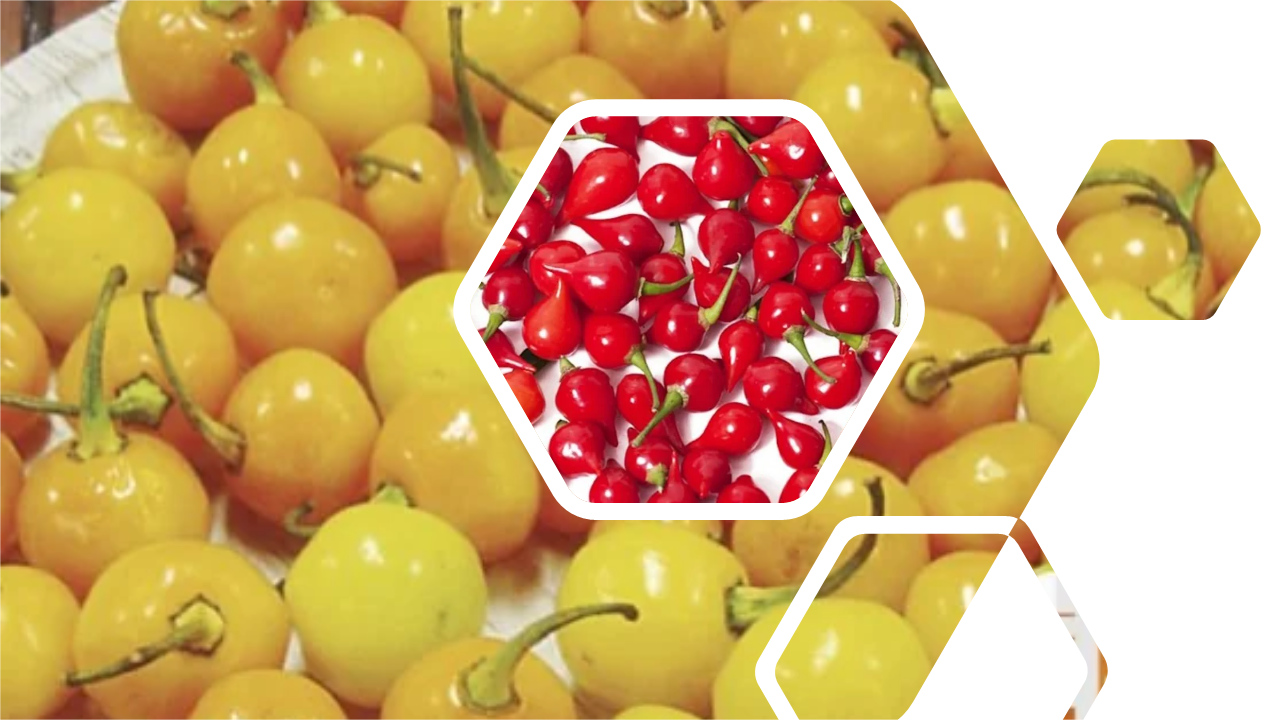Agronomic characterization of biquinho vermelha and bode amarela peppers by principal component analysis
Keywords:
Multivariate analysis, Capsicum chinense, genetical enhancementAbstract
Peppers are part of brazilian cultural richness and a valuable patrimony of Brazil's biodiversity. They have been domesticated over the years and, currently, there are several varieties of pepper, each with its own characteristics. Due to the benefits brought by peppers, their agronomic characterization is important as it can serve as a basis for the development of new cultivars. Thus, the present work aimed to characterize and compare the biquinho vermelha and bode amarela peppers in terms of some of their agronomic characteristics, using principal component analysis. The variables analyzed in the commercial maturity of the plants were: height, height of the first bifurcation, transversal and longitudinal diameter of the plant top, crown compactness, number of fruits, number of leaves, SPAD index, fruit diameter, fruit length, fresh weight of part aerial, pot coverage, leaf length, leaf width, number of lateral branches, length of lateral branches and days after transplanting for flowering (DAT). Using Kaiser's criterion, four principal components were selected in the analysis, which captured approximately 92% of the data variability. The biquinho vermelha pepper was characterized by higher values for number of fruits, fruit diameter, fruit length, fresh weight of aerial part, pot coverage, leaf length and leaf width. The bode amarela pepper was characterized by higher values of plant height, height of the first fork, crown compactness, number of leaves and DAT. There was no difference between the peppers regarding the other agronomic variables analyzed.
References
COSTA, G. N; SILVA, B. M. P; LOPES, A. C. de A; CARVALHO, L. C. B; GOMES, R. L. F. Selection of pepper accessions with ornamental potential. Ver. Caatinga, v. 32, p. 566-574, 2019.
COSTA, L. S.; SILVA, L. S. N.; SILVA FILHA, C. M. R.; SANTOS, J. F. F.; SILVA, R. N. O. Caracterização de genótipos de Capsicum spp. por técnicas multivariadas no sul do Piauí. Brazilian Journal of Development, v. 6, n. 12, p. 97371-97385, 2020.
COSTA, L. V; BENTES, J. L. S; LOPES, M. T. G; ALVES, S. R. M; JÚNIOR, J. M. V. Caracterização de acessos de pimentas do Amazonas. Horticultura Brasileira, v. 33, p. 290-298, 2015.
FINGER, F. L; PEREIRA, G. M. Physiology and postharvest of pepper fruits. In: RÊGO, E. R.; RÊGO, M. M.; FINGER, F. L. Production, and breeding of chilli pepper (Capsicum spp). New York: Springer, 2016, p. 27-40.
HONGYU, K.; SANDANIELO, V. L. M.; OLIVEIRA JUNIOR, G. J. de. Análise de componentes principais: resumo teórico, aplicação e interpretação. Engineering and Science, v. 5, p. 83-90, 2016.
HOTELLING, H. Analysis of a complex of statistical variables into principal components. The Journal Educational Psychology, v. 24, p. 498-520, 1933.
HOTELLING, H. Simplifield calculation of principal components. Psychometrika, v. 1, p. 27-35, 1936.
JOHNSON, R. A.; WICHERN, D. W. Applied multivariate statistical analysis. Madison: Prentice Hall International, 1998. 816p.
KAISER, H. F. The varimax criterion for analytic rotation in factor analysis. Psychometrika, v. 23, p. 187-200, 1958.
MANLY, B. F. J. Multivariate statistical methods. New York: Chapman and Hall, 1986. 159p.
NASCIMENTO, M. F.; ARAÚJO, F. F.; SANTOS, R. M. C.; FINGER, F. L.; BRUCKNER, C. H. Genetic diversity in Capsicum and Solanum genotypes based on morphoagronomic characters. Revista Brasileira de Ciências Agrárias, v. 16, n. 4, p. e1169, 2021.
PEARSON, K. On lines and planes of closest fit to systems of points in space. Philosophical Magazine, v. 2, p. 559-572, 1901.
R CORE TEAM. R: A Language and Environment for Statistical Computing. R Foundation for Statistical Computing, Vienna, Austria, 2023. Disponível em: www.R-project.org/.
REIFSCHNEIDER, F. J. B. Capsicum: pimentas e pimentões no Brasil. Brasília, Embrapa Hortaliças, 103p., 2000.

Downloads
Published
How to Cite
Issue
Section
License
Proposta de Política para Periódicos de Acesso Livre
Autores que publicam nesta revista concordam com os seguintes termos:
- Autores mantém os direitos autorais e concedem à revista o direito de primeira publicação, com o trabalho simultaneamente licenciado sob a Licença Creative Commons Attribution que permite o compartilhamento do trabalho com reconhecimento da autoria e publicação inicial nesta revista.
- Autores têm autorização para assumir contratos adicionais separadamente, para distribuição não-exclusiva da versão do trabalho publicada nesta revista (ex.: publicar em repositório institucional ou como capítulo de livro), com reconhecimento de autoria e publicação inicial nesta revista.
- Autores têm permissão e são estimulados a publicar e distribuir seu trabalho online (ex.: em repositórios institucionais ou na sua página pessoal) a qualquer ponto antes ou durante o processo editorial, já que isso pode gerar alterações produtivas, bem como aumentar o impacto e a citação do trabalho publicado (Veja O Efeito do Acesso Livre).
